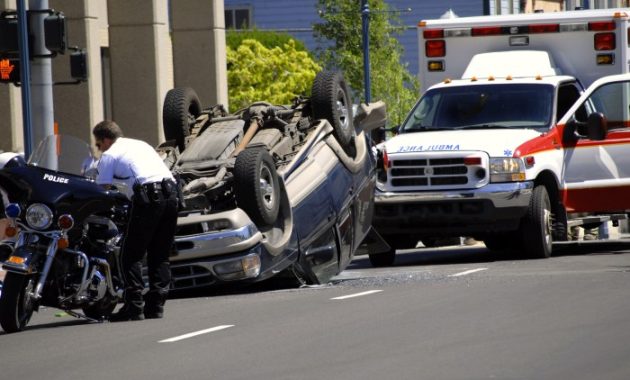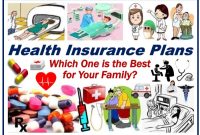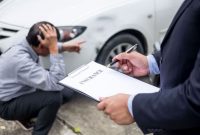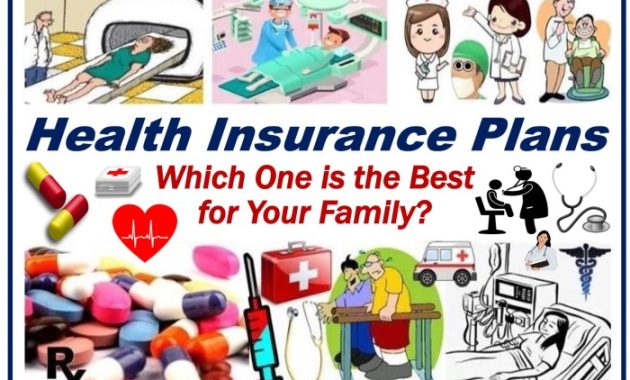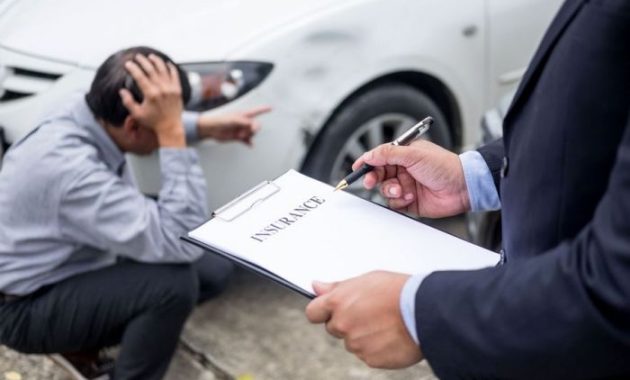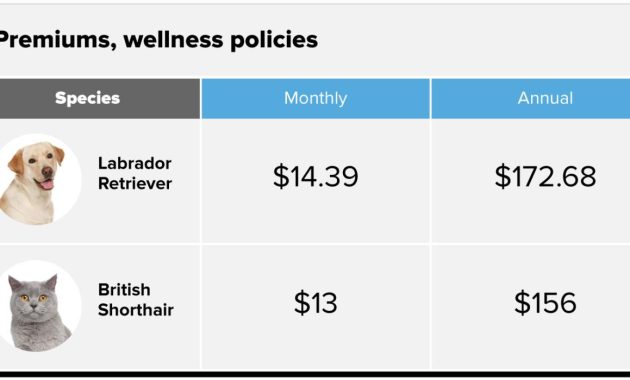Legal Recourse After a Car Accident Without Insurance
Lawyer car accident no insurance – So, you’ve been in a fender bender (or worse!), and the other driver? Uninsured. Cue the dramatic music. Don’t despair, though; while this situation is certainly less than ideal, it’s not the end of the world (or your bank account). Let’s navigate the legal labyrinth together, armed with wit and a healthy dose of legal know-how.
Filing a Claim with Your Own Insurance Company
If you’re lucky enough to have uninsured/underinsured motorist (UM/UIM) coverage, your own insurance company becomes your knight in shining armor (or at least, your very capable insurance adjuster). This coverage protects you from financially irresponsible drivers. The process typically involves filing a claim, providing documentation (police report, medical bills, photos of the damage – think of it as your very own courtroom exhibit A), and cooperating with your insurer’s investigation.
Remember, honesty is the best policy (especially when dealing with insurance companies!). Be prepared for a bit of back-and-forth; they’ll want to assess the damage and your injuries thoroughly before settling. Think of it as a friendly negotiation, albeit one with a slightly more formal tone than haggling over the price of a used car.
Pursuing a Lawsuit Against the At-Fault Uninsured Driver
If your own insurance doesn’t fully cover your losses, or if you’re looking to recoup additional damages beyond what your policy covers, then a lawsuit against the uninsured driver is your next option. This might sound daunting, but remember: David slew Goliath, and you have the legal system on your side. The first step involves serving the defendant with a summons and complaint, formally notifying them of the lawsuit.
Then, it’s a matter of gathering evidence (medical records, witness statements, photos, repair estimates – basically, anything that proves their negligence and your damages). This process can be time-consuming, so patience is key. Think of it as a long game of chess, with the ultimate prize being justice (and compensation).
Potential Legal Arguments and Evidence
In a lawsuit against an uninsured driver, your primary argument will center on proving their negligence caused your accident and resulting injuries. This might involve demonstrating they ran a red light, were speeding, or failed to yield. Evidence can include eyewitness testimonies, police reports (which, if you’re lucky, will clearly state the other driver’s fault), dashcam footage (if you have it, consider yourself exceptionally prepared!), and, of course, medical records documenting your injuries and related expenses.
Remember, the more evidence you have, the stronger your case. Think of it as building a case as strong as a brick wall, one carefully selected brick at a time.
Comparison of Legal Strategies
| Strategy | Pros | Cons | Success Rate (estimated) |
|---|---|---|---|
| Claim with own insurance (UM/UIM) | Faster resolution, less stressful | May not cover all damages, limited payout | High (depending on policy limits) |
| Lawsuit against uninsured driver | Potential for full compensation, includes punitive damages in some cases | Time-consuming, expensive, uncertain outcome | Moderate (depends on evidence and jurisdiction) |
| Combination of both | Maximizes recovery potential | More complex and time-consuming | High (but requires careful coordination) |
| Seeking compensation from the at-fault driver’s assets (if any) | Potential for full or partial recovery if the driver has assets | Requires extensive investigation, low probability of success if driver is judgment-proof | Low (highly dependent on the driver’s financial situation) |
Uninsured Motorist Coverage
Navigating the chaotic world of car accidents is stressful enough, but add a driver without insurance to the mix, and you’ve got a recipe for a truly spectacular headache. Fortunately, there’s a safety net designed to catch you when the other guy’s insurance policy takes a flying leap off a cliff: Uninsured/Underinsured Motorist (UM/UIM) coverage. Think of it as your personal superhero cape against financially irresponsible drivers.Uninsured/Underinsured Motorist (UM/UIM) coverage is a crucial addition to your auto insurance policy that protects you and your passengers from the financial fallout of accidents caused by uninsured or underinsured drivers.
It acts as a backup plan, stepping in to cover your medical bills, lost wages, and property damage when the other driver’s insurance is insufficient or nonexistent. Essentially, it’s your insurance company’s promise to treat you as if the at-fault driverhad* adequate insurance. It’s like having a second line of defense against the perils of the road, a reassuring presence in the face of potential financial ruin.
Facing a car accident with an uninsured driver? Don’t let the stress overwhelm you. Finding a skilled lawyer specializing in car accidents is crucial, and securing your own future is paramount. Consider protecting yourself by looking into reliable car insurance options, like those offered by checking out car insurance newtown providers. This proactive step will safeguard you from similar situations and empower you to focus on recovering from your accident with the support of a great lawyer.
UM/UIM Coverage Compared to Other Auto Insurance
UM/UIM coverage differs significantly from other types of auto insurance. Liability coverage protects
- you* from claims filed against
- you* after an accident you caused. Collision coverage pays for damage to your vehicle regardless of fault. Comprehensive coverage protects against non-collision damage (like hail or vandalism). UM/UIM, however, protects you from the
other* driver’s lack of coverage, acting as a substitute for their nonexistent or inadequate insurance. It’s a critical distinction; liability and collision won’t help if the other driver is uninsured. Imagine it like this
liability is your shield, collision is your armor, and UM/UIM is your emergency backup generator.
Factors Determining UM/UIM Coverage Amounts
Several factors influence the amount of UM/UIM coverage available to you. Your chosen coverage limits are paramount; you select the amount of coverage you want when purchasing the policy. State laws also play a significant role, mandating minimum UM/UIM coverage levels in many jurisdictions. The specifics of your accident, such as the extent of your injuries and property damage, will determine the payout within those limits.
Finally, the insurance company’s assessment of liability and the details of your policy will also impact the ultimate amount received. For instance, a policy with $100,000 in UM/UIM coverage might not pay out the full amount if the accident is deemed partially your fault.
Filing a UM/UIM Claim
Prompt action is key when dealing with an uninsured driver. Here’s a roadmap for navigating the claims process:
- Report the accident to the police immediately. Obtain a police report as it serves as crucial documentation.
- Gather all relevant information from the other driver, including their name, contact information, driver’s license number, and insurance information (or lack thereof).
- Document the accident scene with photographs and videos. This visual evidence is invaluable.
- Seek medical attention for any injuries sustained. Keep detailed records of all medical treatments and expenses.
- Contact your insurance company promptly to report the accident and initiate a claim. Provide them with all the gathered information.
- Cooperate fully with your insurance company’s investigation and follow their instructions for submitting required documentation.
Financial Implications of an Uninsured Driver Accident: Lawyer Car Accident No Insurance
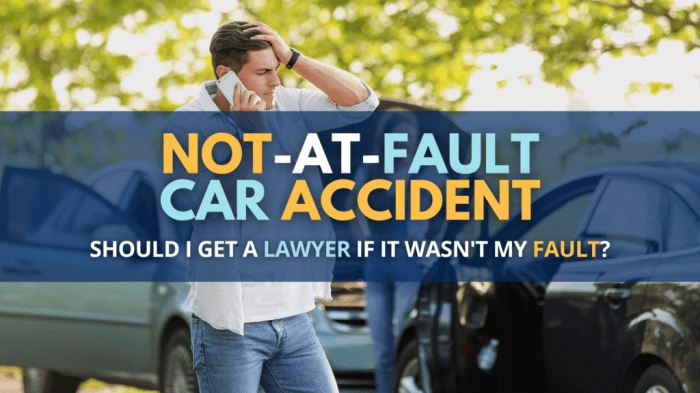
So, you’ve been hit by an uninsured driver. Aside from the immediate physical discomfort (and possibly the existential dread of dealing with the legal system), the financial fallout can feel like a punch to the gut. Let’s unpack the potential costs and explore how to navigate this unfortunate situation. Remember, this isn’t financial advice, just a darkly humorous overview of the potential pitfalls.
The financial repercussions of an accident caused by an uninsured driver can be devastating. The costs can quickly spiral out of control, leaving you facing a mountain of debt if you’re not prepared. We’re talking about potentially significant medical bills, lost income from missed work, and the expense of repairing or replacing your damaged vehicle. It’s a financial black hole that can suck you in faster than you can say “liability insurance.”
Medical Expenses
Medical bills after a car accident can be eye-watering, even for relatively minor injuries. Think ambulance rides, emergency room visits, doctor’s appointments, physical therapy, medication, and potentially long-term care. A broken bone, whiplash, or a concussion can easily translate into thousands, if not tens of thousands, of dollars in medical expenses. For example, a simple fracture requiring surgery and rehabilitation could easily cost $10,000 or more.
And that’s before factoring in any long-term complications.
Lost Wages, Lawyer car accident no insurance
If your injuries prevent you from working, you’ll face lost wages, adding insult to injury (pun intended). This lost income can be substantial, depending on your occupation, salary, and the severity of your injuries. Consider a scenario where a construction worker suffers a back injury and is unable to work for three months. The loss of income could easily exceed $15,000, depending on their hourly wage and benefits.
This loss of income isn’t just about the immediate financial strain; it can also impact your long-term financial stability and credit score.
Property Damage
Beyond medical bills and lost wages, you’ll also have to contend with the cost of repairing or replacing your damaged vehicle. Depending on the extent of the damage, this could range from a few hundred dollars for minor repairs to tens of thousands of dollars for a totaled car. For instance, replacing a modern car’s bumper and hood after a collision could easily cost several thousand dollars, and that doesn’t account for potential depreciation.
The financial burden of property damage can be substantial, especially if you don’t have comprehensive coverage.
The Role of Personal Injury Protection (PIP) Coverage
PIP coverage, if you have it, is your financial superhero in this scenario. It covers your medical expenses and lost wages, regardless of who caused the accident. It acts as a safety net, providing immediate financial relief while you navigate the complexities of dealing with an uninsured driver. Think of PIP as your first line of defense against the financial tsunami of an uninsured motorist accident.
The amount of coverage varies by policy, but it can significantly reduce the financial burden.
Negotiating with Insurance Adjusters
Negotiating with insurance adjusters (even your own) can be a bit like wrestling a greased pig. They are trained negotiators, and their goal is to settle your claim for the lowest possible amount. To increase your chances of a fair settlement, document everything meticulously: medical bills, lost wage statements, repair estimates, police reports, and witness statements. Having a strong case supported by solid documentation is crucial in negotiations.
Consider seeking legal counsel to assist in negotiations and ensure you receive fair compensation.
Types of Compensation
The compensation you may receive can include medical expenses, lost wages, pain and suffering, property damage, and potentially punitive damages (if the uninsured driver acted recklessly). The amount of compensation will depend on the specifics of your case, the severity of your injuries, and the strength of your evidence. For example, a severe injury resulting in permanent disability could lead to a significantly higher settlement than a minor injury with a quick recovery.
Remember, documentation is key to justifying the compensation you seek.
Resources for Financial Assistance
Navigating the financial aftermath of an uninsured driver accident can be overwhelming. Fortunately, several resources can provide assistance. These include legal aid societies, consumer protection agencies, and non-profit organizations that offer financial counseling and support to accident victims. Your own insurance company, even if it’s not directly covering the uninsured driver, can be a valuable resource for guidance and support in navigating the claims process.
Finding and Hiring a Lawyer
Navigating the legal labyrinth after a car accident caused by an uninsured driver can feel like trying to assemble IKEA furniture blindfolded. But fear not, intrepid accident victim! Finding the right legal champion is crucial to securing your rightful compensation. This section will equip you with the tools to find a lawyer who will fight for you with the ferocity of a honey badger protecting its cubs.The search for a legal knight errant should begin with a targeted approach.
Forget about haphazard Google searches for “lawyer near me.” Instead, focus your efforts on attorneys specializing in personal injury cases, with a specific emphasis on uninsured/underinsured motorist claims. State bar associations are excellent resources, offering attorney directories and often providing client reviews. Online legal directories, while needing careful vetting, can also be helpful, but always verify credentials and read reviews critically.
Remember, you’re looking for someone with a proven track record of success in these specific types of cases – not just general personal injury experience.
Lawyer Selection Criteria
Choosing the right lawyer is akin to selecting a superhero for your case. You need someone with the right powers (experience), the right price point (fees), and a reputation for saving the day (reputation). Experience in handling uninsured motorist claims is paramount. Look for lawyers who have successfully navigated the complexities of these cases, demonstrating a deep understanding of insurance law and negotiation tactics.
Transparency in fees is essential. Discuss upfront whether the lawyer works on a contingency basis (meaning they only get paid if you win), and understand any associated costs, such as filing fees or expert witness expenses. Finally, investigate their reputation. Check online reviews, contact past clients if possible, and look for any disciplinary actions against the lawyer with your state’s bar association.
A stellar reputation often indicates a commitment to client satisfaction and successful outcomes.
Obtaining a Free Initial Consultation
Securing a free initial consultation is usually as simple as a phone call or an email. Most personal injury lawyers offer these consultations to assess your case and determine if they’re the right fit. Be prepared to provide a brief overview of your accident and injuries during the initial contact. The lawyer’s office will schedule a convenient time for you to meet, either in person or virtually.
Questions to Ask Potential Lawyers
The initial consultation is your opportunity to interview your potential legal representative. Don’t be shy; this is your chance to find the right fit. Inquire about their experience with uninsured motorist claims, their success rate in similar cases, their fee structure, their approach to case strategy, and their communication style. Also, ask about their team and the support staff who will be working on your case.
A lawyer’s responsiveness and clear communication are vital throughout the legal process. For example, ask about their experience with specific insurance companies known for being difficult to deal with, or their strategies for handling cases involving complex medical issues.
Checklist of Documents and Information
Preparation is key to a productive initial consultation. Bring all relevant documentation related to the accident, including police reports, photos of the accident scene and your injuries, medical records, insurance information (yours and the at-fault driver’s, if available), and any witness statements. Also, have a clear and concise summary of the accident ready, outlining the events leading up to and including the collision.
Be prepared to discuss the extent of your injuries, including any ongoing medical treatment and anticipated future expenses. Finally, bring a list of your questions to ensure you don’t forget anything important. Think of it as your superhero briefing before launching your legal crusade.
Understanding the Legal Process
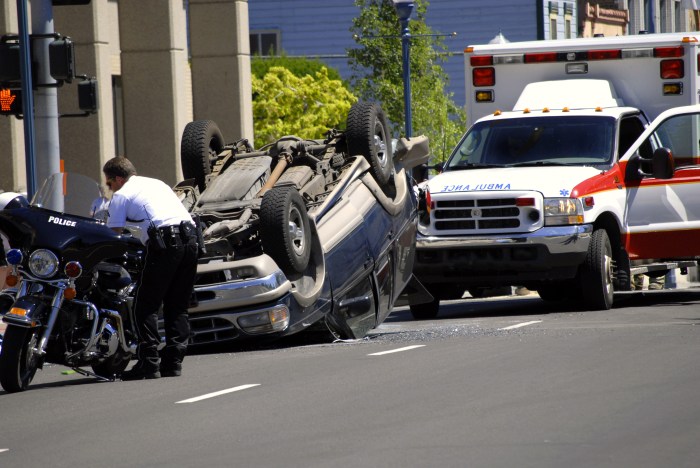
Navigating the legal labyrinth after a car accident with an uninsured driver can feel like trying to assemble IKEA furniture blindfolded – frustrating, confusing, and potentially involving a lot of unexpected swearing. But fear not, intrepid accident victim! This section will illuminate the path, shedding light on the typical timeline and procedures involved in pursuing justice (and maybe some compensation).The legal process following a car accident with an uninsured driver is a journey, not a sprint.
Expect the unexpected, embrace the absurdity, and remember your lawyer is your Sherpa guiding you through this treacherous terrain. While timelines vary based on jurisdiction and case complexity, we can provide a general overview.
Typical Timeline for a Car Accident Lawsuit
The timeline can range from several months to several years, depending on the severity of injuries, the complexity of the case, and the willingness of all parties to cooperate (a rare and precious commodity in these situations). A relatively straightforward case might settle within a year, while more complex cases involving significant injuries and multiple defendants could easily stretch beyond two years.
Think of it as a slow-cooked stew of legal deliciousness (or, perhaps more accurately, a slow-simmering pot of legal anxieties). The key stages are Artikeld below.
Stages of the Legal Process
The legal process generally unfolds in these stages:
- Investigation: This initial phase involves gathering evidence, including police reports, medical records, photographs of the accident scene, and witness statements. Think of it as the legal equivalent of a meticulous crime scene investigation, only instead of solving a murder, you’re solving the puzzle of who’s responsible for your dented fender and throbbing headache.
- Discovery: This stage is a legal sparring match where both sides exchange information. Think interrogatories, depositions (where witnesses are questioned under oath), and requests for documents. It’s a delicate dance of legal maneuvering, a strategic game of information chess. The goal is to uncover all relevant facts, ensuring no skeletons lurk in anyone’s closet (or insurance policy).
- Settlement Negotiations: Before going to trial, most cases attempt to settle out of court. This involves negotiations between the parties to reach a mutually agreeable compensation amount. This is where the art of persuasion and negotiation comes into play – a battle of wits, where the most persuasive lawyer often emerges victorious.
- Trial: If settlement negotiations fail, the case proceeds to trial. This involves presenting evidence and witnesses to a judge or jury, who will ultimately decide liability and damages. Think of it as the legal equivalent of a dramatic courtroom showdown, complete with objections, cross-examinations, and potentially a dramatic revelation or two.
Common Legal Challenges
Uninsured motorist cases present unique challenges. Proving the other driver’s negligence can be difficult if they’re uncooperative or unavailable. Establishing the full extent of your damages, including medical bills, lost wages, and pain and suffering, requires meticulous documentation. Securing payment from the uninsured driver’s assets, if any, can also be a significant hurdle. Essentially, you’re trying to squeeze blood from a stone, only the stone is a particularly stubborn and legally savvy stone.
Role of Evidence
Evidence is the bedrock of any successful personal injury claim. Police reports provide an objective account of the accident. Medical records document your injuries and treatment. Witness testimonies corroborate your version of events. The more compelling and comprehensive your evidence, the stronger your case.
Think of it as building a legal Jenga tower: each piece of evidence adds to the stability and strength of your claim. Without sufficient evidence, your case could crumble like a poorly constructed Jenga tower.
Structuring a Compelling Narrative
A compelling narrative is crucial for a successful personal injury claim. It humanizes your experience, making it relatable to the judge or jury. This narrative should paint a clear picture of the accident, its impact on your life, and the justice you seek.
Case Study Example: Imagine a hardworking single mother, Sarah, involved in a rear-end collision caused by an uninsured driver. Sarah suffered whiplash, requiring extensive physical therapy and causing her to miss several weeks of work. Her compelling narrative would not only detail the physical injuries but also the emotional toll – the stress of medical bills, the struggle to provide for her children, and the fear of financial instability.
This narrative, supported by medical records, lost wage statements, and witness testimonies, would powerfully illustrate the severity of her injuries and the injustice she suffered.
Preventing Future Accidents
Avoiding accidents, especially those involving uninsured drivers, requires a proactive approach blending defensive driving techniques with a healthy dose of caution. It’s less about dodging runaway shopping carts and more about consistently making smart choices on the road, minimizing your exposure to risk, and ensuring you’re protected should the unexpected occur.Defensive driving isn’t about becoming a paranoid road warrior; it’s about anticipating potential hazards and reacting appropriately.
Think of it as a preemptive strike against chaos, a strategic maneuver to keep you and your vehicle safe.
Defensive Driving Techniques
Adopting a defensive driving mindset involves several key strategies. Maintaining a safe following distance, for instance, provides crucial reaction time in case the car ahead brakes suddenly. This distance should be increased in adverse weather conditions. Similarly, scanning the road ahead and to the sides, constantly checking your mirrors, and being aware of blind spots helps anticipate potential problems before they arise.
Avoiding distractions like cell phones is paramount; a momentary lapse in attention can have devastating consequences. Remember, the goal is to be aware of your surroundings and to react calmly and safely to unexpected events.
Verifying Insurance Coverage Before Settlements
Before agreeing to any settlement after an accident, always verify the other driver’s insurance coverage. Don’t just take their word for it; request proof of insurance directly. This can often be done by asking for their insurance card or contacting their insurance company yourself. This seemingly simple step can save you significant financial headaches down the line. Insisting on this verification is not being difficult; it’s protecting your financial well-being.
Protecting Yourself and Your Vehicle
Protecting yourself and your vehicle extends beyond just defensive driving. Regularly maintaining your vehicle, ensuring your brakes, tires, and lights are in optimal condition, significantly reduces the risk of accidents. Furthermore, installing a dashcam can provide irrefutable evidence in the event of an accident, proving invaluable during insurance claims or legal proceedings. Consider investing in a comprehensive insurance policy that includes uninsured/underinsured motorist coverage; this protection acts as a financial safety net should you be involved in an accident with an uninsured driver.
This is akin to having a financial parachute—you hope you never need it, but it’s reassuring to know it’s there.
Identifying and Responding to Road Risks
Identifying potential risks involves actively looking for hazards. This includes being aware of distracted drivers (those on their phones or otherwise inattentive), vehicles making sudden lane changes, and pedestrians who may not be paying attention. Responding appropriately involves adjusting your speed, increasing your following distance, and signaling your intentions clearly to other drivers. If you encounter a potentially dangerous situation, it’s always better to err on the side of caution and take evasive action, even if it means slowing down or pulling over.
Remember, arriving late is better than not arriving at all.
Visual Representation of Safe Driving Practices
Imagine a circular diagram. At the center is the driver, representing focus and awareness. Radiating outwards are spokes representing key elements of safe driving: a large spoke for “Maintaining Safe Following Distance,” another for “Constant Awareness of Surroundings (mirrors, blind spots),” a third for “Avoiding Distractions,” and a fourth for “Predictive Driving (anticipating potential hazards).” Around the circumference of the circle are smaller segments illustrating specific actions: checking mirrors regularly, signaling lane changes, maintaining a safe speed, and adjusting driving for weather conditions.
The entire image symbolizes the holistic approach needed for safe and responsible driving.

